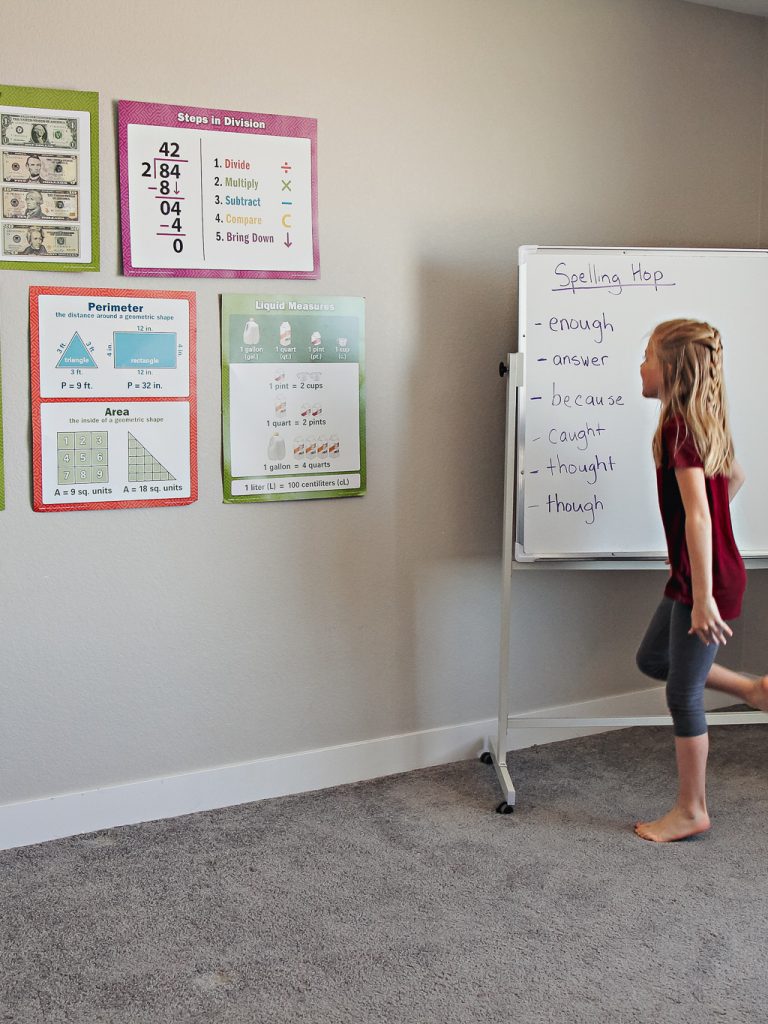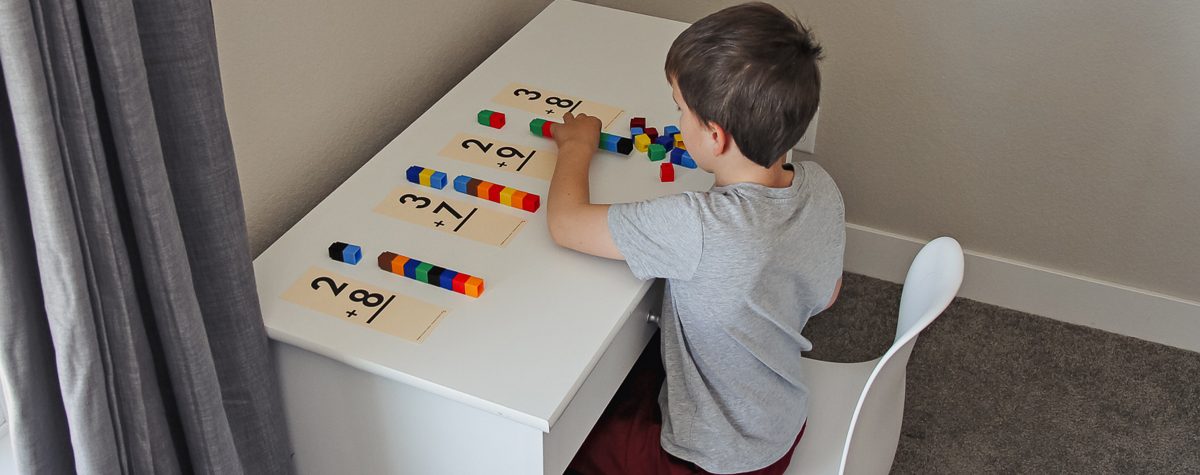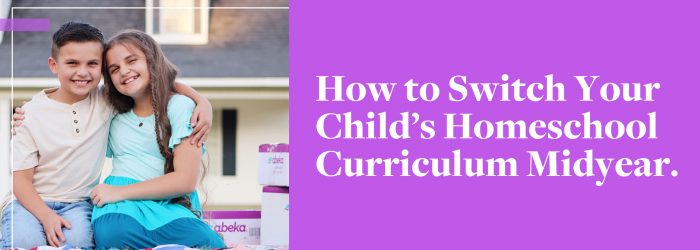Hi! I’m Kara Cunningham, homeschooling mom to five, living in Colorado. Our family has been using Abeka homeschool for seven years. My oldest, Emmaline, will be entering 6th grade in the fall, followed by Charlotte (4th), Laurence (2nd), and Oliver (Pre-K). I also have a toddler, Theodore, and one on the way this fall. I’m delighted to get to share with you today a look inside our homeschool life, and how we handle different learning styles in our home.
If you notice that your child seems to be struggling with learning concepts that are being taught in the curriculum, then it might be time to step back and evaluate if it’s one of these two things: different learning style/preference or needing additional review.
- Needing additional review—Homeschooling allows us to go at a different pace if needed. If a child seems to be struggling with getting a concept, then you are able to slow down and work with them on that concept until it is conquered, so they can move forward with confidence. Thanks to the many amazing online resources, there are often extra worksheets or game ideas for mastering different concepts that can be easily found by a simple search. This can be especially helpful because it also switches up how they’re learning, which can sometimes make things “click” in a child’s mind.
- Learning Style and Preference—If your child is struggling not just with one lesson/concept but also appears to struggle with any new things being taught, then it is probably time to take a look at what learning style best fits your child’s needs and find ways to incorporate that into your teaching so that your child can thrive moving forward. It is very helpful to always incorporate all 3 learning preferences into your child’s schooling, but it can be helpful when they are struggling to put extra focus on their preferred learning style.
There are 3 main learning styles (visual, auditory, and kinesthetic). I’ll briefly discuss each and share ways that can be helpful if your child falls into that learning preference.
Visual Learners (Seeing)
Visual learners often learn best when charts, graphs, and diagrams are used. They love pictures and other visual aids to help them fully grasp a concept. Now, some concepts aren’t easy to show in a picture, but even writing out problems or explanations on a board has been shown to help visual learners retain the information better.
Auditory Learners (Hearing)
Auditory learners tend to retain information through hearing and speaking. Consider using rhymes, poems, or music to help them remember different ideas. Discussions are encouraged, and sometimes a student can even benefit from listening to soft music as they are working on their lessons. If they are at an age where they take notes, it can be helpful if they read their notes back to themselves aloud to remember and understand them better.

Kinesthetic Learners (Doing)
Kinesthetic learners often learn best when they are able to touch or feel items that they associate with the content. For example, using objects like learning blocks to teach kinesthetic learners their math facts can be very helpful. Another fun way to help kinesthetic learners is to have them hop up and down as they say math facts or practice spelling as it keeps their bodies moving. They also tend to enjoy note-taking, as this allows physical movement.
As mentioned above, it is still helpful to use all teaching methods as this will help them later in life, but it can be beneficial, when you see your child struggling, to know which category/categories they fall into. Especially when teaching complex subjects, it can be helpful to use their learning style to help them fully grasp the concept and move forward with confidence.




Comments for How to Keep Up with Different Learning Styles
Add A Comment
Your email address will not be published. Required fields are marked *